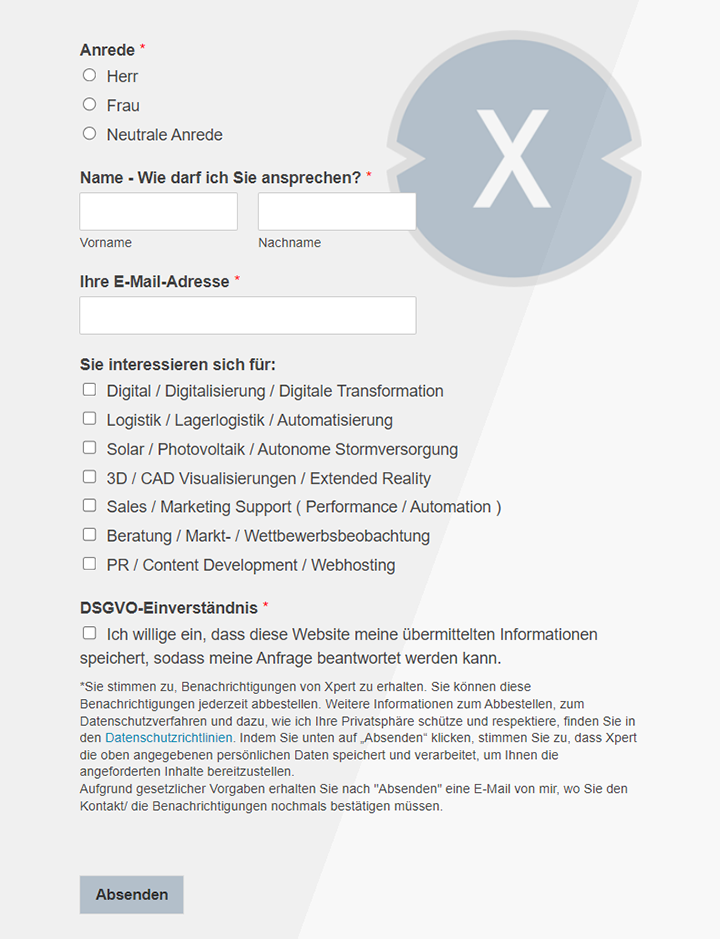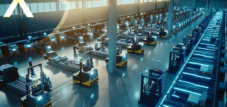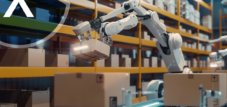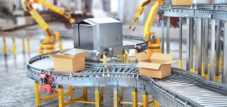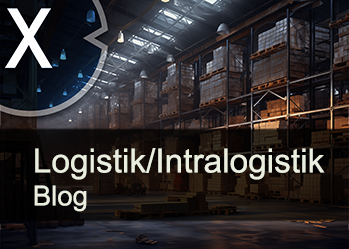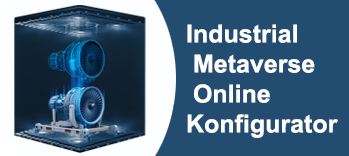Warehouse Retrofit and Warehouse Automation in the USA – Over 80% of warehouses today have no automation whatsoever
Xpert pre-release
Language selection 📢
Published on: January 5, 2025 / Update from: January 5, 2025 - Author: Konrad Wolfenstein
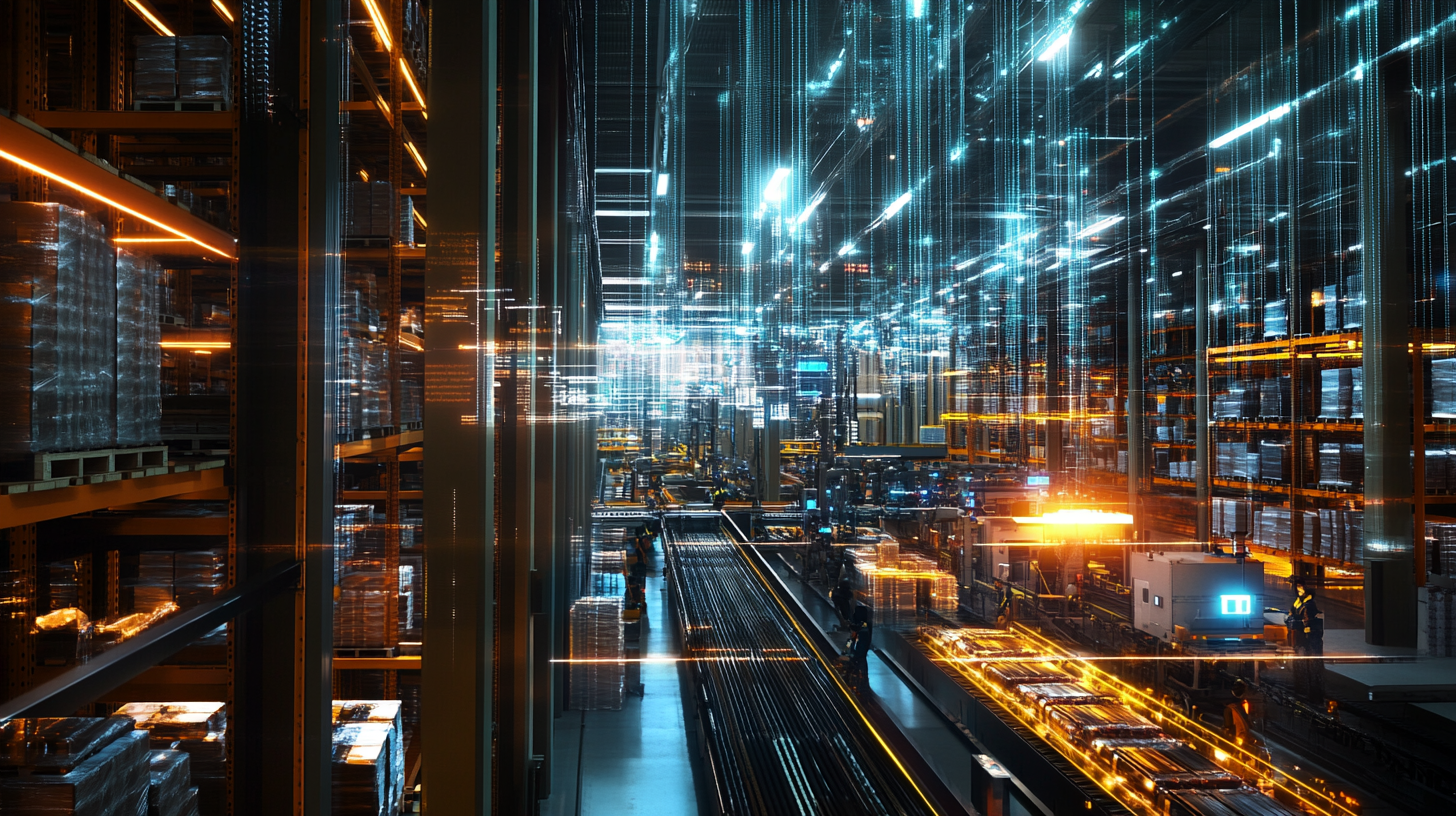
Warehouse retrofit and warehouse automation in the USA – Over 80% of warehouses today have no automation whatsoever – Image: Xpert.Digital
Pulse of the Warehouses: A Look at the Automation Challenges in the US
The Transformation of Warehouses: A Look at Automation
The pulsating arteries of modern trade and logistics, the warehouses, are on the threshold of a profound transformation. While the digital revolution has reshaped many aspects of our lives and economies, automation in warehouses – particularly in the United States – is still lagging behind. Recent data paints a surprising picture: More than 80% of warehouses in the US now operate without any form of automation. This number may seem paradoxical given technological advances and increasing demands for speed and efficiency. But a closer look at the reasons for this reluctance and the emerging trends reveals an exciting dynamic.
Suitable for:
The current state of automation
Industry analysis strongly shows that the majority of the American warehouse landscape still relies on traditional, manual processes. An alarming proportion of around 80% of warehouses have no automation at all. This finding is consistent with global observations that paint a similar picture and show that a comparably high percentage of warehouses worldwide are not yet automated. Looking at the last ten years, only about 15% of warehouses have been mechanized, while advanced automation technologies have only found their way into a small segment of about 5% of warehouses. These figures make it clear that the potential for automation in this sector is enormous and the coming years are likely to be marked by significant changes.
Reasons for the hesitant introduction
The reasons for the hesitant introduction of automation to date are diverse and complex. Although the benefits of automation - such as increased efficiency, reduced error rates and relief for employees with repetitive tasks - are obvious, there are hurdles that have previously prevented many companies from making major investments.
Lack of specialist knowledge as an obstacle
A key factor is the lack of specialist knowledge. A significant number of companies, specifically around 28%, state that they lack the necessary internal skills to successfully plan, implement and operate automation projects. Integrating new technologies requires specialized knowledge in areas such as robotics, software development and data analysis. Many companies, especially small and medium-sized businesses, do not have the appropriate experts or resources to develop these skills.
Integration difficulties
Another significant obstacle is integration difficulties. Almost a quarter of companies (approx. 25%) see challenges in seamlessly integrating new automation solutions into their existing warehouse environments and IT systems. Warehouses are often complex systems with established processes and infrastructures. The integration of new technologies requires careful planning and can lead to disruptions in ongoing operations, which many companies are afraid of. Compatibility with existing warehouse management systems (WMS) and other operational software systems is a crucial factor.
Costs as a decisive factor
The costs should not be underestimated. The initial investment costs for automation technologies can be significant and represent a high hurdle for many companies, especially smaller players with limited financial resources. The acquisition of robots, conveyors, automated warehouse systems and the necessary software requires substantial capital expenditure. In addition to the direct acquisition costs, there are also costs for installation, implementation, maintenance and employee training. The payback period of such investments can also be a factor leading to reluctance.
Other influencing factors
In addition to these primary hurdles, other factors also play a role. Skepticism about new technologies and a certain inertia in changing established processes can also contribute to companies being hesitant to automate. Sometimes there is also a lack of a clear understanding of the long-term benefits and return on investment (ROI) of automation projects. There are also concerns about the flexibility of automated systems and their ability to adapt to changing warehouse operations needs. Another aspect is concern for employees' jobs, although studies show that automation is more likely to lead to a shift in tasks and the creation of new, more qualified jobs than to massive job cuts. Last but not least, data protection concerns and the security of networked automation systems also play a role in the decision-making process.
But the signs of the times point to change. Despite the currently low automation rate, a significant upswing is expected in the coming years. Various forecasts indicate significant growth in the warehouse automation market.
Warehouse automation forecast in the USA
By 2027, it is expected that approximately 26% of U.S. warehouses will have some form of automation. This represents a significant increase from the 18% recorded at the end of 2021. This forecast underlines the increasing momentum and growing interest in automation solutions.
Suitable for:
Global warehouse automation market
The global market for warehouse automation will also expand significantly in the coming years. Experts estimate that the market volume will grow to around $35 billion by 2025. This represents an impressive compound annual growth rate of around 12% between 2021 and 2024.
Development in North America
The development in North America deserves particular mention. The warehouse automation market in this region is forecast to grow from $7.5 billion in 2024 to a significant $23.2 billion in 2031. This corresponds to an annual growth rate of approximately 17.4%. These figures make it clear that North America and especially the USA will be a key growth driver for warehouse automation.
Drivers of automation
This positive outlook is fueled by various factors. The boom in e-commerce and the associated increased demand for fast and efficient deliveries are forcing companies to optimize their warehouse processes. Consumers today expect their orders to be processed ever faster, which is difficult to achieve without the use of automation.
Labor shortage as a challenge
Another crucial factor is the increasing labor shortage in the logistics industry. It is becoming increasingly difficult to find qualified employees for strenuous and repetitive tasks in the warehouse. Automation offers an opportunity to close these gaps and reduce dependence on human labor.
Complexity of warehouse processes
The increasing complexity of warehouse processes, due to a greater variety of products and smaller batch sizes, also requires more intelligent and efficient solutions. Manual processes are increasingly reaching their limits here.
Technological developments
Not to be forgotten are the advancing technological developments in the areas of robotics, artificial intelligence (AI) and machine learning. These technologies enable increasingly sophisticated and flexible automation solutions that can better adapt to the dynamic requirements in the warehouse.
Competitive pressure and increased efficiency
Increasing competitive pressure is also forcing companies to increase their efficiency and reduce costs. Automation offers a clear competitive advantage here.
Technologies in warehouse automation
The technological landscape of warehouse automation is diverse and dynamic. A number of innovative technologies are driving the transformation of the sector:
- Automated Guided Vehicles (AGVs) and Autonomous Mobile Robots (AMR): These intelligent vehicles transport goods within the warehouse, optimize routes and reduce the need for manual transport work. AMRs are characterized by their ability to autonomously navigate and avoid obstacles.
- Order picking robots: These robots are able to pick individual items from shelves and assemble orders precisely. They use advanced image recognition and grasping technologies.
- Automated storage and retrieval systems (AS/RS): These systems automate the storage and retrieval of goods and optimize the use of space in the warehouse. They are particularly efficient in high-bay warehouses.
- Drones: Drones are increasingly being used for inventory tasks and inventory monitoring. They offer a quick and efficient way to survey large storage areas.
- Warehouse Management Systems (WMS): These software systems form the brain of the automated warehouse. You control and optimize all warehouse processes, from receiving goods to shipping.
- Artificial Intelligence (AI) and Machine Learning: AI algorithms are used to analyze warehouse processes, predict demand, optimize routes and improve the performance of robots.
Advantages of warehouse automation
The benefits of warehouse automation go far beyond just increasing efficiency. They range from cost reductions through reduced personnel costs and lower error rates to greater speed and accuracy in order processing and improvements in occupational safety through the use of robots in dangerous environments. In addition, automation enables better use of storage space and higher turnover speeds. Employee satisfaction may also increase as repetitive and physically demanding tasks are taken over by robots, allowing employees to focus on more demanding tasks. Last but not least, automation provides valuable data and insights that can be used to further optimize warehouse processes.
Implementation challenges
However, implementing warehouse automation also comes with challenges. The complexity of implementation requires careful planning and expertise. The need for qualified personnel to operate and maintain automated systems is increasing. Data protection and data security are also important aspects that must be taken into account. Step-by-step implementation and effective change management are crucial for the success of automation projects.
Outlook on the future of warehouse automation
It is to be expected that technologies will become increasingly flexible and adaptable. Collaboration between humans and robots will play an increasingly important role. AI-supported systems will further optimize warehouse processes and make them more autonomous. The sustainability aspect is also becoming more important, as energy-efficient automation solutions can help reduce the ecological footprint of warehouses.
Warehouse automation in the USA is facing a significant growth spurt despite its current low level of penetration. The urgent needs for increased efficiency, the challenges of labor shortages and the constant technological advances will lead to an accelerated adoption of automation solutions in warehouses in the coming years. The transformation of the warehouse landscape has begun and will fundamentally change the way goods are stored and moved.
Xpert partner in warehouse planning and construction

Xpert.Plus warehouse optimization - high-bay warehouses such as pallet warehouses consulting and planning
We are there for you - advice - planning - implementation - project management
☑️ SME support in strategy, consulting, planning and implementation
☑️ Creation or realignment of the digital strategy and digitalization
☑️ Expansion and optimization of international sales processes
☑️ Global & Digital B2B trading platforms
☑️ Pioneer Business Development
I would be happy to serve as your personal advisor.
You can contact me by filling out the contact form below or simply call me on +49 89 89 674 804 (Munich) .
I'm looking forward to our joint project.
Xpert.Digital - Konrad Wolfenstein
Xpert.Digital is a hub for industry with a focus on digitalization, mechanical engineering, logistics/intralogistics and photovoltaics.
With our 360° business development solution, we support well-known companies from new business to after sales.
Market intelligence, smarketing, marketing automation, content development, PR, mail campaigns, personalized social media and lead nurturing are part of our digital tools.
You can find out more at: www.xpert.digital - www.xpert.solar - www.xpert.plus






